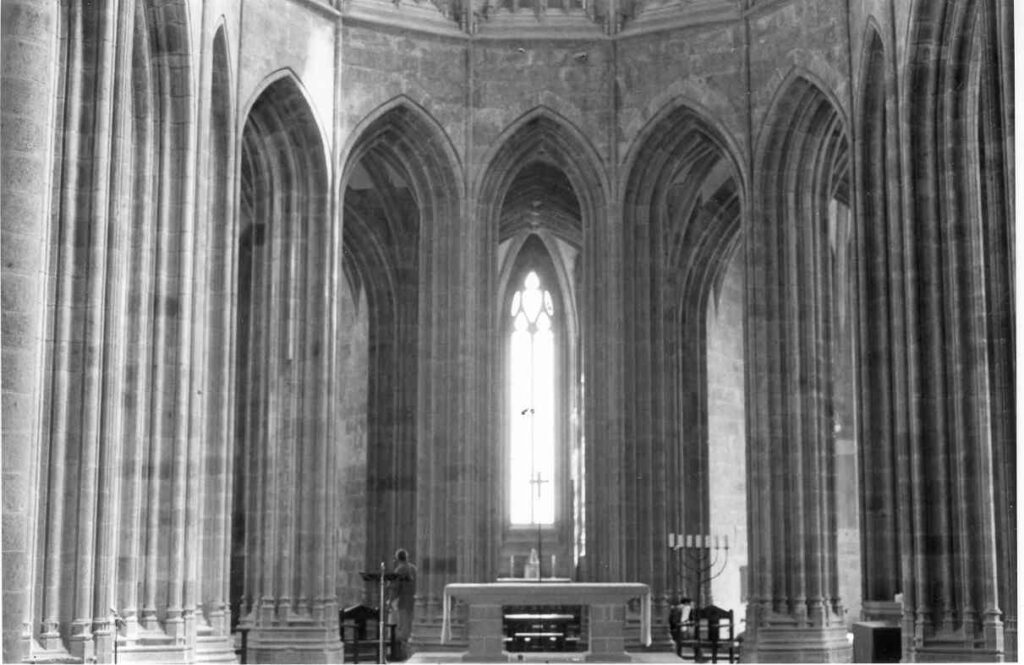
Within Christianity, the contemplative tradition is understood to have “officially” begun around 300 CE in the deserts of Egypt by “the Desert Fathers and Mothers”. Anthony, Athanasius, Evagrius, John Cassian, and numerous others leave the city and civilization and go to the desert to pursue a life of simplicity and disciplined prayer. While some do so in solitude as hermits, the majority did so in communities: the founding of Christian monasteries. From that point onward, primarily but not exclusively within monasteries and nunneries, monks and nuns undertake intense, sustained, contemplative prayer as part of monastic life. The goal of contemplation was to draw closer and closer to God – “resting in God” was Pope Gregory’s definition of contemplation in the 6th century – ultimately, to experience union with God (unio mystica in Latin, “mystical union”). So what is being called here the contemplative tradition is the same as (and perhaps better known as?) the Christian mystical tradition. (This should alert the reader: there is an enormous amount of material on Christian mysticism – far more than can be easily summarized on a webpage or two! The best presentation of this tradition is by scholar Bernard McGinn, a projected seven-volume series called The Presence of God; although McGinn has published numerous other books on Christian mysticism, too.)
Numerous Christian mystics across the centuries – John of the Cross, Teresa of Avila, Pseudo-Dionysius, Julian of Norwich, Meister Eckhart, the anonymous author of The Cloud of Unknowing, Francis of Assisi – practiced contemplation and describe a great diversity of mystical experiences. With the Reformation contemplation and mysticism are taken out of the monastery and become diffused more generally throughout Protestant Christianity, while continuing within Catholicism primarily within the monasteries. With the Enlightenment and rise of science, the increasing emphasis on rationalism (both within Christianity as well as within secular society) meant a corresponding decrease of interest in mysticism. In the middle of the 20th century, interest has greatly revived and numerous retrievals of Christian contemplative practices and interest in mystical experiences and literature are being undertaken.
Of course, there is much more to Christianity than the contemplative or mystical tradition; Richard Foster, a theologian who has taught worldwide on spiritual formation and wrote a number of books on the notion of spiritual practices and disciplines – most notably, perhaps, Celebration of Discipline – describes the contemplative tradition as one of six traditions of Christian practice in his book Streams of Living Water.
Was contemplation practiced before the 3rd century CE? Were there pre-Christian forms and traditions of contemplation? The answer to both questions is yes. While it is arguable whether Jesus and his disciples practiced contemplation as there is no definitive proof, contemplatives certainly think so and there is alot of suggestive evidence to support that view. Every gospel reports how Jesus would regularly “slip away” from the press of the crowds in the city to seek out a lonely quiet place in nature, where he prayed – for hours, or days? – before returning. Presumably much of this prayer was contemplative.
There is no doubt that a diversity of forms of contemplation were practiced by the Greek philosophers – such as Pythagoras, Socrates, Plato, Epicurus, the Stoics, the neo-Platonists, to name a few – and their followers (the Latin word contemplatio is the translation of the Greek word theoria, which was understood then as a meditative, whole person activity, and not “theory” in a purely intellectual sense as it is meant today). From the time of Alexander on (4th century BCE), the “Hellenization” of the Mediterranean and the ancient Near East meant that Greek contemplative practices were spread throughout the region (including Judaea). Thus prior to “Christian contemplation proper” as began in the 3rd century CE in the Egyptian desert, there are certainly contemplatives of whom Christians would have known, like Philo, Porphyry, and Plotinus.
Looking at Judaism as the immediate preceding religious matrix from which Christianity emerges, discerning whether some form of contemplation was practiced by the prophets or as part of Jewish prayer life, is exceedingly hard to do. But there are tantalizing examples not least of which are the numerous ecstatic visions of many of the prophets paired to their extensive prayer life, while closer to the advent of Christianity there are groups like the Essenes. (Anyone interested in looking at this question in detail, I lay out the evidence as best I can in Chapter 6 of my Practicing Transcendence book. While I am unable to definitively establish whether contemplation was practiced or not, I think I do show that it is quite plausible.)

